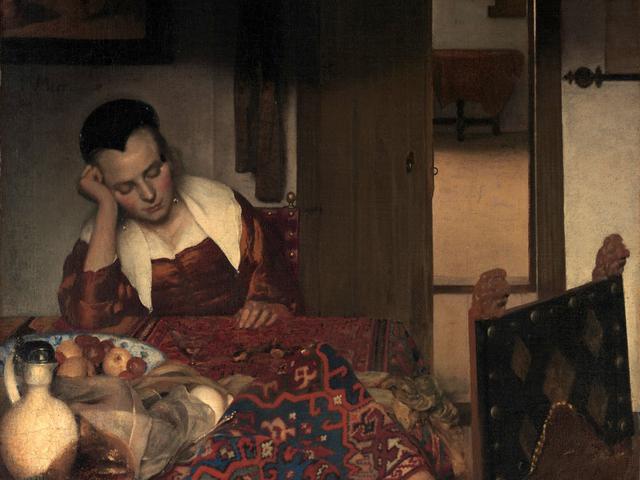A sleeping girl

Jan Vermeer's A Sleeping Girl, produced relatively early in his career, appears to represent a transitional work for this 17th-century Dutch artist. Not only does he begin to paint gender themes with the beginning of this work, but he also begins to explore the effect of perspective, compositional structure, light, color and atmosphere in relation to the intimate interior scene depicted in this painting. .
Vermeer's artistic development spans approximately 20 years from the time he entered the painters' guild in Delft at the age of 21 in 1653, until his death in 1675. His meticulous painting method partly limited his artistic output to just 30 paintings that are currently identified. and attributed as works of Vermeer. Of these, only two are dated, The Procurator and The Astronomer. Her painting, A Sleeping Girl, was probably painted in 1657 after the Dresden Procuratorate, judging by the similarity of facial expression and type between the two female figures, the relatively large size of the canvas (86.5 x 76 cm ), the predominance of red and yellow tones and the similar oriental rug that occupies the foreground of the painting.
The subject portrayed in A Girl Asleep is deceptively simple: a young woman, apparently asleep, sits at a table in a dimly lit interior. His elbow is propped on the table for support as he rests his head on his hand. A quiet stillness permeates the painting, which is enhanced by the girl's gentle kindness. Its surroundings suggest an upper-class Dutch home. The richly designed Turkish rug covering the table is carelessly raised like the front of the table. A painting and a map hang on the walls on either side of an open door, which gives access to another room through a small hallway. The horizontal and vertical shapes formed by the table and chair, the door and the picture map frames are repeated again in this outdoor room. Vermeer's use of these horizontal and vertical stabilizers produces a sense of stability that subtly reinforces the timeless quality evoked in the painting suggested by the static posture of the girl, who appears to be frozen in eternal repose.
As a renowned Dutch artist during the Golden Age era, Johannes Vermeer made a name for himself with his famous works, such as View of Delft and Little Street. Perhaps, this was all due to the fact that he was born in Delft, in the Netherlands. Therefore, his inspirations mainly came from where he grew up, which had a great impact on his life and career as a painter. His other paintings include The Concert, Women with a Jug of Water, and Girl Asleep at the Table. These were his popular masterpieces as his style evolved after his experience as part of the Delft Painters' Guild in his hometown.
© Tourblink